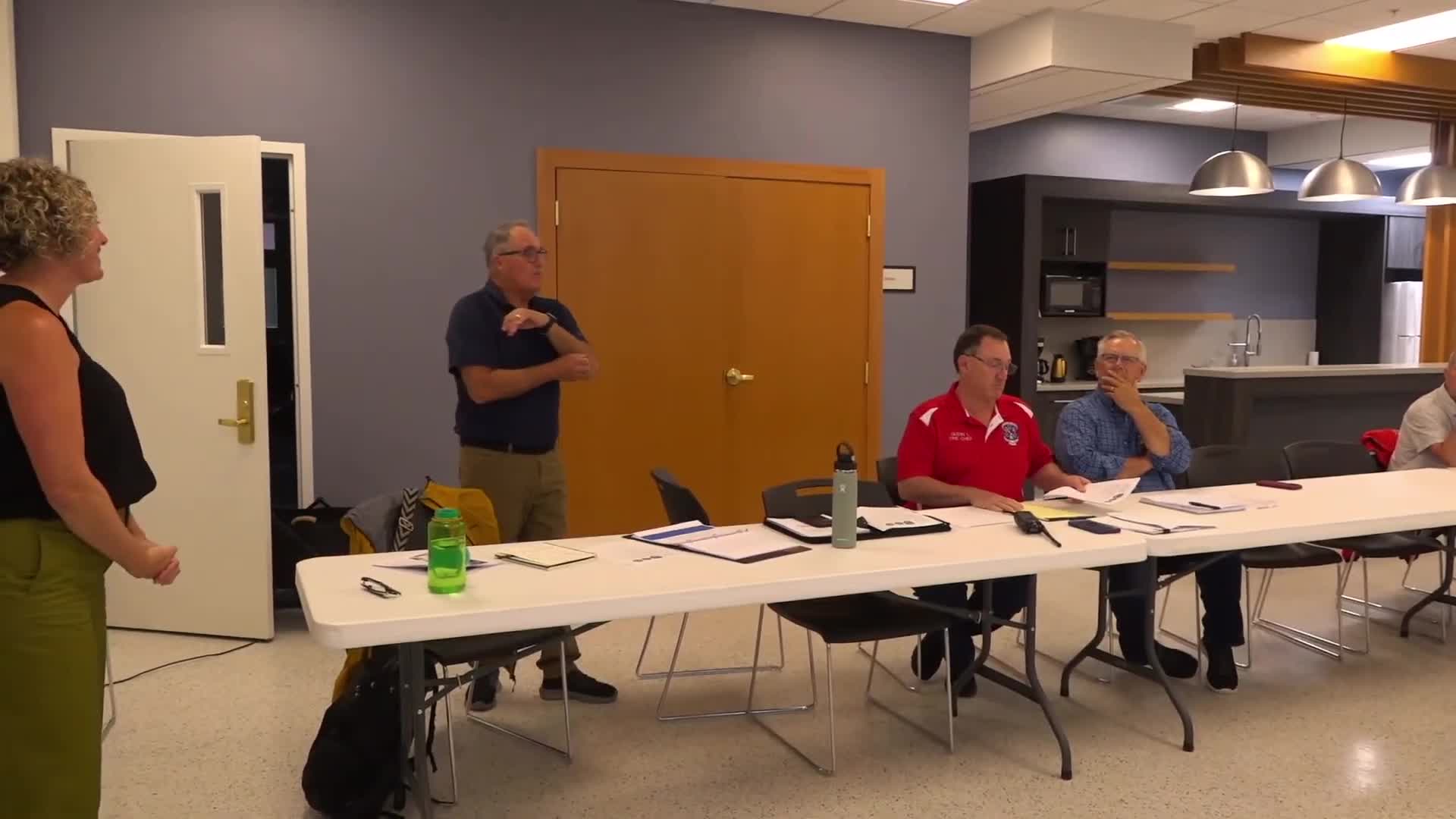Dunn County reviews emergency response time standards for fire and medical services
August 01, 2025 | Oregon, Dane County, Wisconsin
This article was created by AI summarizing key points discussed. AI makes mistakes, so for full details and context, please refer to the video of the full meeting. Please report any errors so we can fix them. Report an error »

In a recent Oregon Joint Village Board Meeting held on July 30, 2025, officials discussed critical aspects of fire and emergency medical services (EMS) response times, emphasizing the importance of timely interventions in emergencies. The meeting highlighted the three components of response time as defined by the National Fire Protection Association (NFPA): call processing time, turnout time, and travel time.
Call processing time begins when an emergency call is received and dispatched to the fire department. Turnout time is the duration it takes for firefighters to get from the station to their apparatus, while travel time is the period taken to reach the emergency site. The NFPA standards suggest that for fire calls, the goal is to have a first engine company on the scene within four minutes, 90% of the time. For EMS calls, the expectation is similar, with a basic life support unit arriving within the same timeframe.
The significance of these response times cannot be overstated. Research indicates that irreversible brain damage can occur within four to six minutes after cardiac arrest, making rapid access to defibrillators and emergency services crucial. Similarly, fires can escalate rapidly, doubling in intensity every minute, underscoring the need for swift action from emergency responders.
During the meeting, officials also discussed the geographical layout of the response area, which includes parts of Dunn County, Rutland, and the town of Oregon. By utilizing Geographic Information Systems (GIS), the team aims to analyze response times across the district, identifying areas that may require improved access or resources.
The discussions at this meeting reflect a broader commitment to enhancing public safety and ensuring that emergency services can meet the expectations of the community. As the village continues to assess its emergency response capabilities, the focus remains on minimizing response times to protect residents effectively. Future steps will likely involve further analysis of response data and potential adjustments to service locations or staffing to meet established standards.
Call processing time begins when an emergency call is received and dispatched to the fire department. Turnout time is the duration it takes for firefighters to get from the station to their apparatus, while travel time is the period taken to reach the emergency site. The NFPA standards suggest that for fire calls, the goal is to have a first engine company on the scene within four minutes, 90% of the time. For EMS calls, the expectation is similar, with a basic life support unit arriving within the same timeframe.
The significance of these response times cannot be overstated. Research indicates that irreversible brain damage can occur within four to six minutes after cardiac arrest, making rapid access to defibrillators and emergency services crucial. Similarly, fires can escalate rapidly, doubling in intensity every minute, underscoring the need for swift action from emergency responders.
During the meeting, officials also discussed the geographical layout of the response area, which includes parts of Dunn County, Rutland, and the town of Oregon. By utilizing Geographic Information Systems (GIS), the team aims to analyze response times across the district, identifying areas that may require improved access or resources.
The discussions at this meeting reflect a broader commitment to enhancing public safety and ensuring that emergency services can meet the expectations of the community. As the village continues to assess its emergency response capabilities, the focus remains on minimizing response times to protect residents effectively. Future steps will likely involve further analysis of response data and potential adjustments to service locations or staffing to meet established standards.
View full meeting
This article is based on a recent meeting—watch the full video and explore the complete transcript for deeper insights into the discussion.
View full meeting
